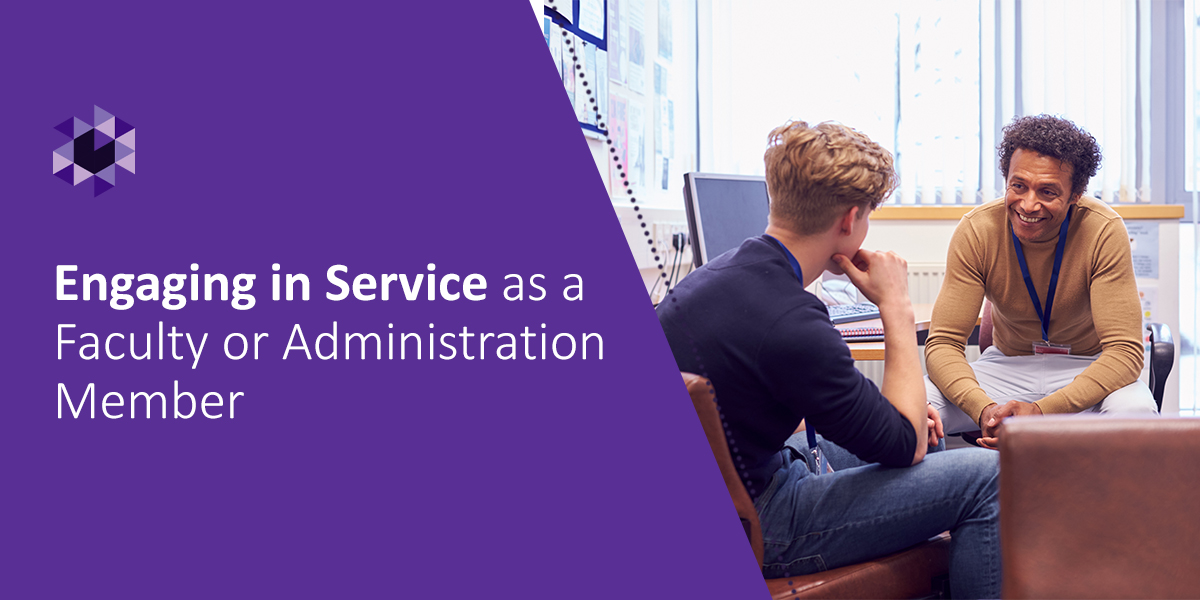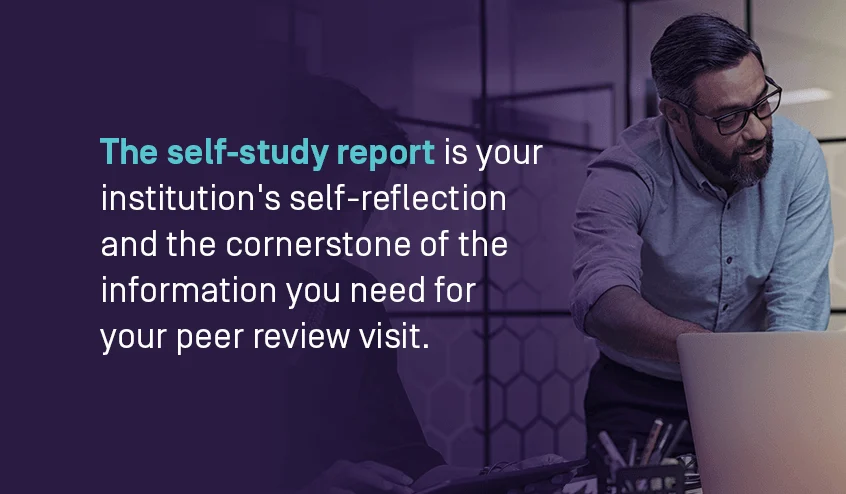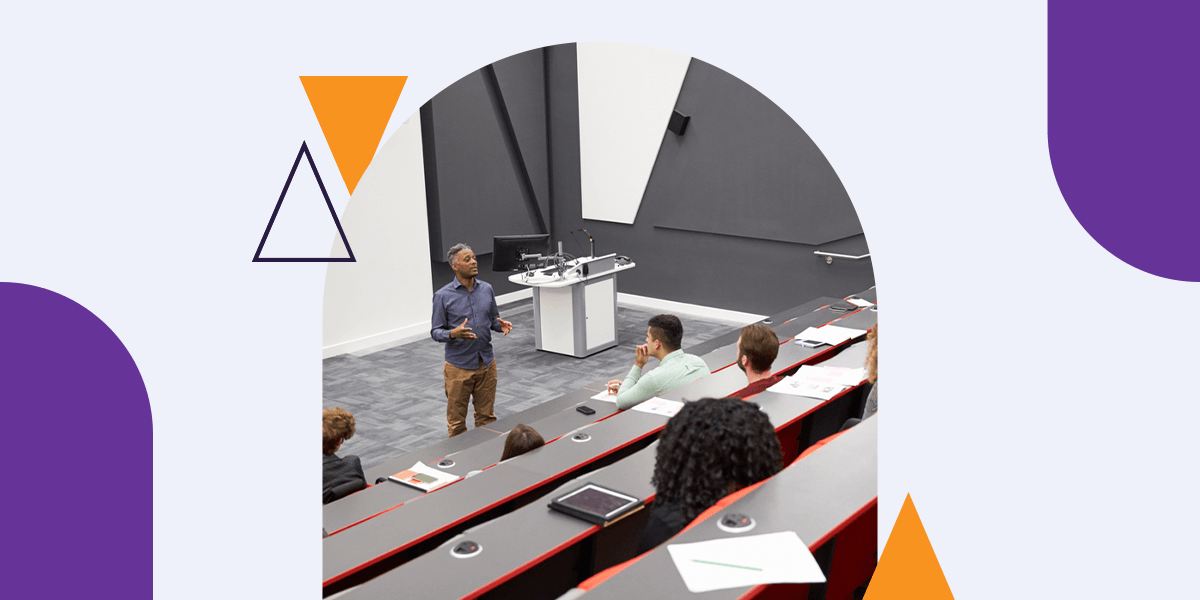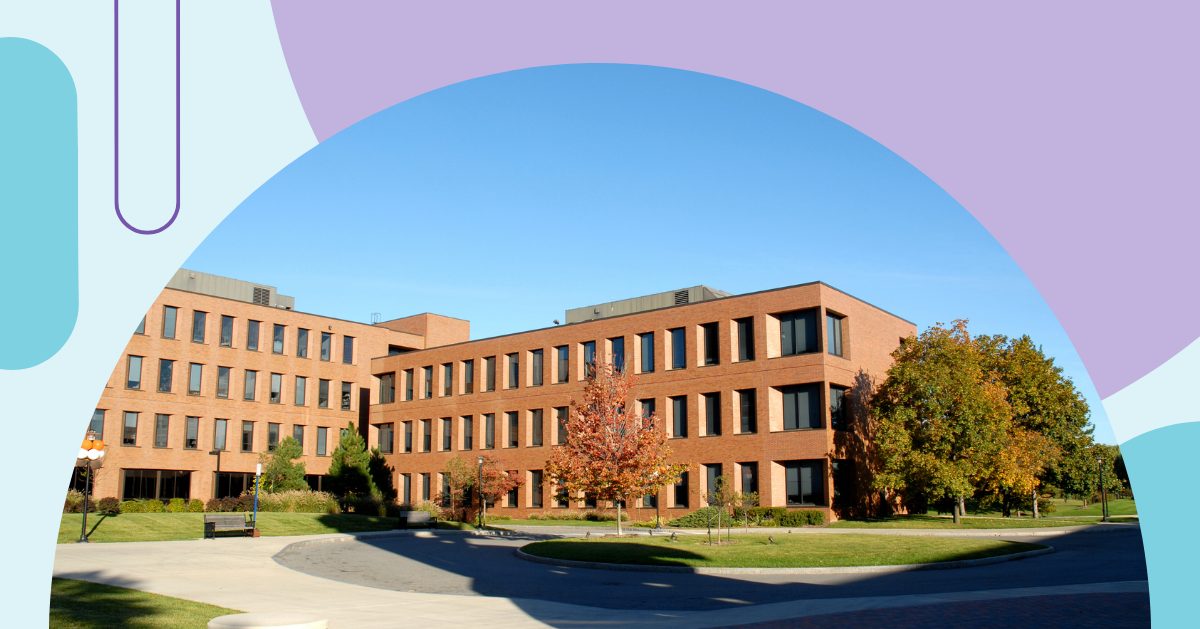
For higher education institutions, institutional effectiveness (IE) is an organic body of processes rather than a fixed status. As socioeconomic and technological realities shift, so do the challenges IE must overcome and the tools available for solving them. If your institution is experiencing increasing enrollment, the growing numbers could fuel new strides in higher education excellence but will also place greater demands on existing institutional resources.
Your choice of IE strategies is essential to shaping the outcomes of rising numbers at your institution. This guide will explore the future of IE at higher education institutions with increasing enrollment numbers.
What is institutional effectiveness?
IE is a systematic process of continuous self-evaluation and improvement by a higher education institution to align its performance with its mission and objectives. Institutional effectiveness planning is vital to ensure quality education, comprehensive student support, and efficient operations at higher education institutions. Its primary components are:
- Defining standards: IE starts with a clear articulation of the institution’s mission, vision, values, and strategic goals and objectives, along with accreditation standards its programs are pursuing or maintaining. These are the reference points defining what effectiveness entails for your institution. To clarify the picture further and facilitate performance evaluation, set measurable KPIs that will show tangible progress toward institutional objectives.
- Measuring performance: The next step is to gather and analyze KPI data at course, program, or institutional levels. Aim to identify strengths and weaknesses in relation to objectives, and ask why some areas are lagging compared to others.
- Strategic planning: Based on analysis of performance data, the institution’s IE team collaborates on a strategic plan to improve weaker areas in line with institutional objectives.
- Continuous improvement: Guided by strategic IE planning, the institution implements improvements and monitors progress as measurement continues. The IE measurement and planning process itself is subject to continuous improvement, including the adoption of new methods and technologies for efficient, accurate insights.
Measuring institutional effectiveness
Higher education institutions are taking more innovative and comprehensive approaches to IE measurement while still relying on tried-and-true indicators of success. Your institution’s approach to IE measurement will vary with your strategic objectives, but standard methods include:
- Surveys and course evaluations: Course evaluations, exit surveys, and satisfaction surveys for students and other stakeholders can reveal crucial perspectives on how daily activities align with institutional objectives. However, the value of survey feedback depends on the question selection and response rates. Use cutting-edge survey and evaluations software to increase responses and clear, relevant questions in various formats to elicit the quality feedback you need.
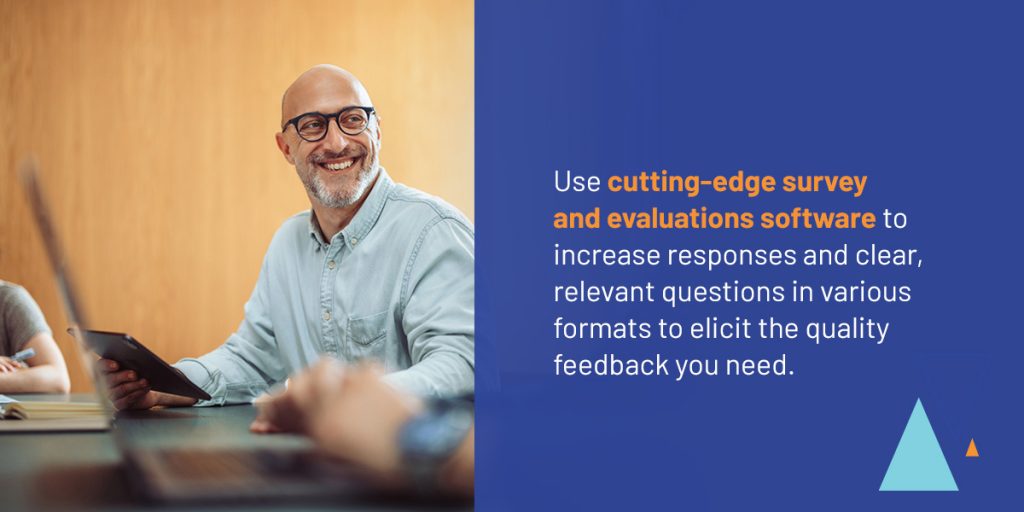
- Focus groups: Focus groups are another useful method for learning from the experiences of students, faculty, industry professionals, community members, and other stakeholders. Discussions embracing these diverse viewpoints can uncover potential misalignments between institutional objectives and daily performance, as well as constructive ideas for solutions.
- Program reviews: While some dimensions of IE, like total research output, lend themselves to institution-wide measurement, many are best measured at the program or course level. This means program reviews naturally feed into the IE cycle, and administrators can optimize program reviews for IE by evaluating curriculum relevance, faculty qualifications, student outcomes, and alignment between program outlines and institutional goals.
- Accreditation self-studies: Self-studies demonstrating adherence to accreditation standards represent opportunities for evidence-based IE measurement and continuous improvement, provided the accreditation standards are consistent with your institution’s mission. Accreditation self-study software can streamline this process, saving administrators and faculty more time to plan and implement improvements.
- Retention rates: Student retention rates are vital to monitor for any institution prioritizing effective teaching, robust student support, and an engaging learning experience. This is a staple metric for IE measurement, though many factors can impact retention rates, so any upticks in attrition require further investigation to understand the reasons behind the data shift. Faculty retention is another crucial IE success metric.
- Assessment outcomes: Grades are important indicators of student success. For useful insights to maximize institutional improvement, go beyond class averages to identify specific areas of difficulty in curricula, and sort grades by demographic to detect any student populations who may be underserved by support resources.
- KPIs: Beyond retention and grades, IE measurement at your institution may involve tracking graduation rates, student satisfaction, post-graduation outcomes, student-faculty ratios, and other metrics.
Institutional effectiveness and enrollment numbers
Many institutions are concerned about going over an enrollment cliff and prioritize increasing numbers as a top strategic objective. Others attract growing numbers but find it challenging to maintain high standards as classes expand. Each situation has its advantages and disadvantages. If your institution is navigating rising enrollment counts, understanding the challenges and opportunities for IE is crucial.
How increasing enrollment benefits institutional effectiveness
Increasing enrollment can unlock significant benefits for your institution, including financial growth and diversity. More students bring more tuition revenue, enhancing your institution’s financial stability. The increased revenue allows reinvestment in programs, services, and infrastructure to enhance institutional effectiveness.
If your recruitment strategies appeal to diverse demographics, increasing numbers can also help cultivate an inclusive and equitable campus, improving the educational experience and sense of belonging for all students.
The challenges of increasing enrollment for institutional effectiveness
Realizing the benefits of increasing enrollment for institutional effectiveness requires overcoming the associated challenges. These include:

- Allocating resources: While growing student numbers bring more financial resources, they also increase the demands on these resources. This makes it challenging to identify the most urgent and impactful areas for investment.
- Expanding infrastructure: Campus infrastructure like classrooms and student housing may need to expand to serve a growing student population. Institutions with increasing enrollment should also consider whether their digital infrastructure, including LMS, student success, and course evaluation software solutions, can accommodate the rise in user volume.
- Maintaining quality: Upholding high academic standards can get difficult if faculty-to-student ratios become too high. As enrollment increases, institutions must monitor faculty workloads and invest in training, tools, and recruitment initiatives to ensure lecturers can create high-quality learning experiences for every student in their classes.
- Scaling support systems: Increasing enrollment requires institutions to have sufficient support staff and systems to help every student succeed. A more diverse student population may also need an expanding range of support services, including tutoring, financial aid, mental health counseling, career advice, and accessibility services.
10 institutional effectiveness planning strategies for increasing enrollment
If your institution aims to maintain and improve institutional effectiveness amid a growing student population, these 10 strategies can help you achieve your goals.
1. Make data-driven decisions
If your institution has one overarching principle driving its approach to IE, let it be a commitment to data-driven decisions. These decisions involve three main steps:
- Collection: Use automated data analytics tools to integrate data and track your KPIs.
- Analysis: Provide real-time, user-friendly dashboards for visualizing patterns in KPI data from your analytics software.
- Action: Train your IE team to understand KPI data, collaborate on strategic IE plans based on their insights, and implement improvements.
2. Increase efficiency through software
Lean on IE software to automate or streamline manual processes wherever possible. These tools can save your team time to reinvest in planning and guiding strategic improvements while also unlocking insights to enhance key activities.
The best-case scenario is to have an arsenal of solutions that are easy to integrate and allow a seamless flow of information throughout your institution. Regularly review whether your current software solutions are serving your IE objectives, what opportunities exist to make progress by adopting new tools, and what features you need if you’re seeking to upgrade.
3. Gather feedback
Feedback from students and other stakeholders is a valuable resource for steering IE, but many institutions rely on inefficient methods for collecting and using feedback. Investing in cutting-edge survey and evaluations software can streamline your feedback cycle while unlocking more actionable insights. Look for a solution that offers:
- Integration with your LMS for a seamless user experience and automated data transfer.
- Automated reminders and optional grade gating to ensure high response rates.
- Real-time data analysis and intuitive reporting to make data-driven insights accessible to anyone who needs them instantly.
4. Optimize resources
Some of the highest ROI decisions your institution can make based on data analytics are those regarding resource optimization. These decisions aim to invest money and time in the areas most impactful for achieving IE objectives.
For example, if few students use the on-campus writing center while the waiting list for one-on-one tutoring is stretching by the week, reallocating resources from the writing center to the tutoring program could improve student satisfaction and academic outcomes. On the other hand, if other data points indicate a strong need for the writing center, resources could go to raising awareness of the center and making it more accessible.
5. Scale your support services
While a growing student population may require expanding your support infrastructure, it is vital to equip your support staff with the tools they need to accomplish more with the resources they already have. Explore technological solutions to save support staff time while delivering the same or greater impact.
For example, early alerts driven by predictive analytics allow faculty to provide proactive support to at-risk students. This concentrates efforts where they are most needed and prompts early interventions before more extensive measures become necessary. You could also equip students with a user-friendly, mobile-responsive platform for discovering and scheduling the support services they need.
6. Perform ongoing assessment of programs
Your program curricula are essential to multiple dimensions of IE, including student engagement, grades, and post-graduation outcomes. However, curricula must evolve to meet student needs and keep up with advancing knowledge and innovations.
The solution is to implement ongoing program development to ensure course outlines and lesson plans are aligned with IE objectives. Effective program development involves curriculum mapping to improve overall comprehensiveness and cohesion, as well as student performance data analytics to discover and close comprehension gaps.
7. Prioritize retention
Student retention is a KPI for almost every dimension of IE. Strong retention rates suggest that students are engaged and experiencing quality education they trust to move them toward their academic and career goals.
If retention rates fall below expectations, dive deeper into the data to discover the courses and demographics with higher dropout rates. This information can reveal areas where supplemental tutoring, personalized counseling, mentorship, or other targeted interventions can make the greatest contributions to student persistence.
8. Promote belonging
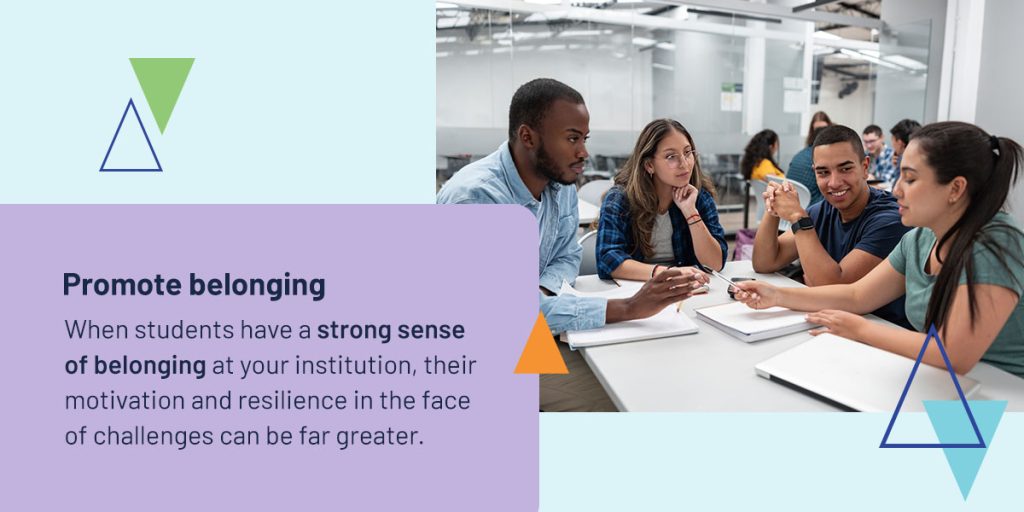
When students have a strong sense of belonging at your institution, their motivation and resilience in the face of challenges can be far greater. Students can feel a close connection to a community of peers even as enrollment numbers boom, provided they can access:
- A vibrant, distinctive, and inclusive institutional culture.
- Mentorship from more advanced peers or faculty.
- Clubs, teams, and social events that bring like-minded students together.
- Counseling and other support resources to help overcome obstacles to belonging.
9. Invest in professional development
Your institution could reach a point where recruiting additional faculty is crucial for maintaining educational quality. But up to that point, you can encourage academic excellence by upskilling your current teaching faculty.
Professional development courses and workshops focused on innovative and effective teaching methods can help your lecturers deliver quality instruction to growing classes. When it’s time to hire new faculty, having an engaging professional development program can be a significant attraction to top candidates.
10. Align accreditation cycles with IE
Accreditation and IE processes are naturally synergistic. Pursue accreditation from bodies with similar values to your institution, and your IE team can draw from your accreditation self-studies to understand how your programs align with standards that reflect your goals. These standards could include industry-oriented content, effective teaching, and qualified faculty. As your IE team drives progress in these areas, their improvement initiatives will also support achieving and maintaining accreditation.
Enhance IE at your institution with Watermark software
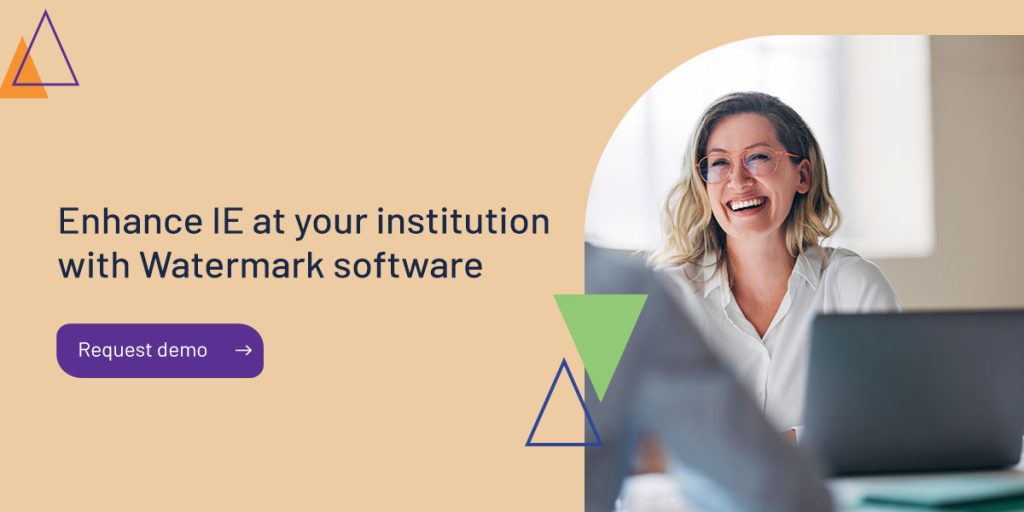
If your institution wants to streamline IE processes while enhancing impact with data-driven insights, arming your team with the right software is crucial. With Watermark’s Educational Impact Suite (EIS), you can access an array of innovative solutions for institutional effectiveness as your higher education institution scales. These IE tools are easy to use, integrate seamlessly with your existing digital infrastructure, and include:
- Student Success & Engagement to provide targeted student support informed by predictive analytics.
- Course Evaluations & Surveys to boost response rates and extract insights from stakeholder feedback in real time.
- Curriculum Strategy to map and improve program content in line with institutional objectives.
- Planning & Self-Study for simplified accreditation reports to measure, display, and improve IE in relation to accreditation standards.
Request a free demo of our EIS today to experience the data-driven future of institutional effectiveness.













































































































